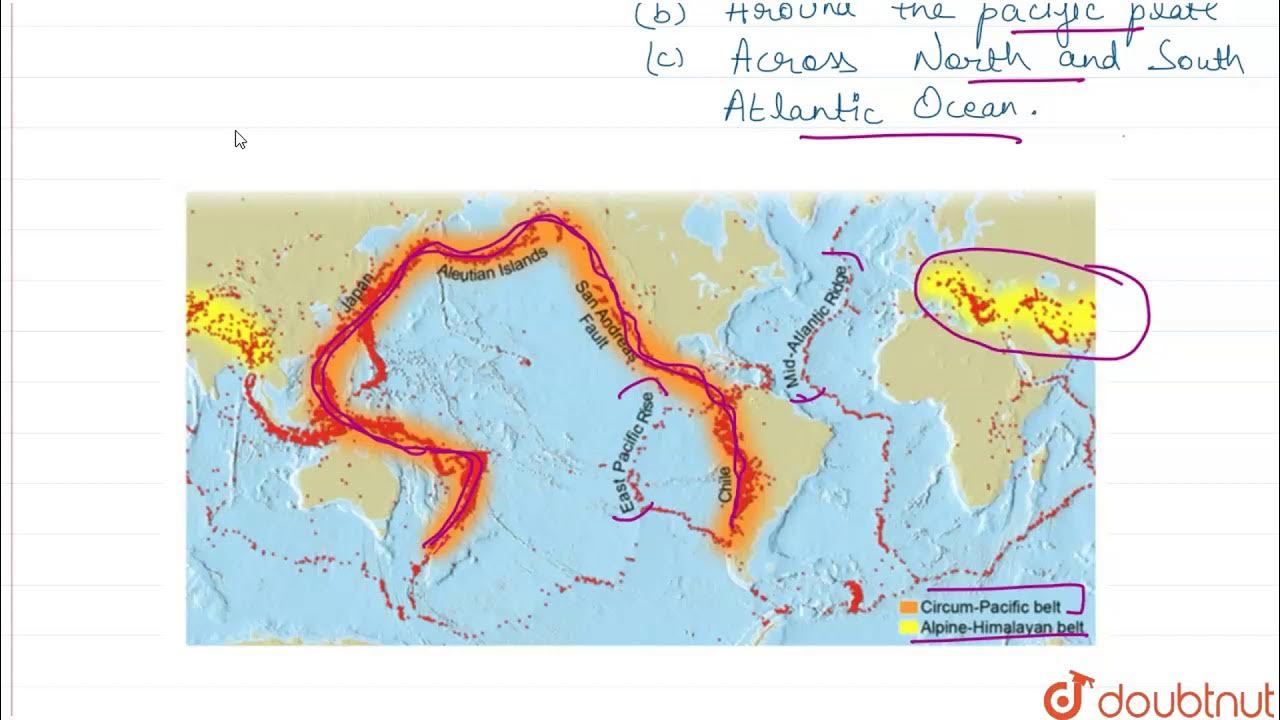Why there's a ring of natural disasters around the Pacific
Summary
TLDRThe video script explores the Ring of Fire, a seismically active region around the Pacific Ocean where most of the world's volcanoes and earthquakes occur. It discusses recent volcanic eruptions and earthquakes, the historical understanding of these phenomena, and the tectonic plate movements causing them. The script also highlights the unpredictability of these events and the importance of preparedness through building codes and early warning systems, emphasizing the need for continued study and adaptation to these natural forces.
Takeaways
- 🌋 Volcanic Activity: The script describes several volcanic eruptions, including Mount Mayon in the Philippines, Mount Sinabung in Indonesia, and an eruption in Guatemala that resulted in over 100 deaths.
- 🌍 Ring of Fire: It highlights the Ring of Fire, a region around the Pacific Ocean where many volcanoes and earthquakes occur, spanning 40,000 kilometers.
- 🔍 Volcanic Frequency: On average, 10 to 20 volcanoes are erupting worldwide at any given time, indicating the commonality of volcanic activity.
- 🌏 Tectonic Plates: The movement and interaction of tectonic plates, particularly along the Pacific, are identified as the cause of the Ring of Fire's seismic activity.
- 🏙️ Global Impact: The script mentions the impact of these natural disasters, including the potential for large-scale devastation and the importance of preparedness.
- 🏛️ Historical Recognition: The awareness of volcanic activity has been recognized since the 1800s, with early maps indicating known volcanic regions.
- 🛠️ Building Codes: The importance of anti-earthquake building designs and early warning systems is emphasized, as seen in Japan's preparedness measures.
- ⏳ Predictive Challenges: Geologists face difficulties in accurately predicting volcanic eruptions and earthquakes, which poses a significant challenge for disaster preparedness.
- 🌳 Natural Patterns: The script suggests that studying past events can help forecast future seismic activities, although with limitations in precision.
- 🏡 Infrastructure and Economy: The varying quality and implementation of anti-earthquake building codes and the lack of early warning systems in different countries are highlighted as concerns.
- 🚨 Awareness and Preparedness: The script concludes with a call for improved awareness and preparedness for natural disasters in the Ring of Fire region.
Q & A
What significant event occurred at Mount Mayon in the Philippines in January?
-Mount Mayon in the Philippines erupted in January, and the eruption continued for over a month.
What is the average number of volcanoes erupting worldwide at any given time?
-On average, there are 10 to 20 volcanoes erupting around the world at any given time.
What is the term used to describe the region along the edges of the Pacific Ocean with a high concentration of volcanoes?
-This region is known as the Ring of Fire.
How many kilometers does the Ring of Fire span?
-The Ring of Fire spans 40,000 kilometers.
What types of natural disasters are commonly associated with the Ring of Fire?
-The Ring of Fire is associated with most of the world's earthquakes, tsunamis, and volcanic eruptions.
How many eruptions and major earthquakes occurred in the Ring of Fire region in the year mentioned in the script?
-In that year alone, the region saw 4 volcanic eruptions and 5 of the world's biggest earthquakes.
What is the scientific explanation for the volcanic and seismic activity in the Ring of Fire?
-The Ring of Fire is the result of tectonic plates crashing into each other.
Why are there many volcanoes in Mexico and along the west coast of the United States?
-The Pacific plate is moving faster than other plates and is crashing into or grinding past the North American plate, causing volcanic and seismic activity in these regions.
What major earthquake event is mentioned as having occurred in California?
-The San Francisco-Oakland earthquake in 1989 is mentioned, which resulted in 63 deaths and nearly 4,000 injuries.
Why is it difficult for geologists to accurately predict volcanic eruptions and earthquakes?
-Geologists can monitor signs like tremors, gas emissions, and temperature changes, but they cannot predict the exact timing or severity of eruptions or earthquakes.
What measures can countries take to mitigate the impact of natural disasters in the Ring of Fire?
-Countries can enforce anti-earthquake building designs and develop early warning systems to save lives and reduce damages.
Why do some countries struggle to implement effective disaster preparedness measures?
-Factors such as lack of funding, inconsistent quality and implementation of building codes, and insufficient public awareness contribute to the struggle in implementing disaster preparedness measures.
What is the current status of early-warning systems for earthquakes in the United States?
-Some of the most vulnerable states in the US, like California, Oregon, and Washington, still don’t have a public early-warning system in place.
Outlines

Cette section est réservée aux utilisateurs payants. Améliorez votre compte pour accéder à cette section.
Améliorer maintenantMindmap

Cette section est réservée aux utilisateurs payants. Améliorez votre compte pour accéder à cette section.
Améliorer maintenantKeywords

Cette section est réservée aux utilisateurs payants. Améliorez votre compte pour accéder à cette section.
Améliorer maintenantHighlights

Cette section est réservée aux utilisateurs payants. Améliorez votre compte pour accéder à cette section.
Améliorer maintenantTranscripts

Cette section est réservée aux utilisateurs payants. Améliorez votre compte pour accéder à cette section.
Améliorer maintenantVoir Plus de Vidéos Connexes

DISTRIBUTION OF EARTHQUAKE AND VOLCANOES

Pacific Ring Of Fire | Fact about Natural Ring Of Volcano

What Are Volcanoes and How Are They Formed?

Conheça as PLACAS TECTÔNICAS e seus principais MOVIMENTOS

PLATE TECTONIC THEORY | Volcanoes, Earthquakes, Mountain Ranges| Grade 10 Science Quarter 1 Module 1

Science 10. Q1. Distribution of Active Volcanoes, Earthquake Epicenters and Major Mountain Belts
5.0 / 5 (0 votes)
